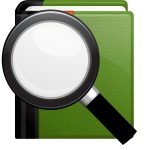References

Banks, J., Kea, C., & Coleman, M. R. (2023). Making meaningful connections: Facilitating schoolwide family engagement with culturally diverse families. Teaching Exceptional Children. https://doi.org/10.1177/00400599231182048
Batshaw, M., Roizen, N. J., & Pellegrino, L. (Eds.). (2019). Children with disabilities (8th ed.). Baltimore, MD: Paul H. Brookes Publishing Co.
Black, L. I., Vahratian, A., & Hoffman, H. J. (2015). Communication Disorders and Use of Intervention Services among Children Aged 3-17 Years: United States, 2012. NCHS Data Brief. Number 205. Centers for Disease Control and Prevention.
Boberiene, L. V. (2013). Can policy facilitate human capital development? The critical role of student and family engagement in schools. American Journal of Orthopsychiatry, 83(2-3), 346. https://doi.org/10.1111/ajop.12041
Boulet, S. L., Boyle, C. A., & Schieve, L. A. (2009). Health care use and health and functional impact of developmental disabilities among US children, 1997-2005. Archives of pediatrics & adolescent medicine, 163(1), 19-26. https://doi.org/10.1001/archpediatrics.2008.506.
CAST (2018). Universal Design for Learning Guidelines version 2.2. Retrieved from http://udlguidelines.cast.org
Jung, L. A. (2007). Writing SMART objectives and strategies that fit the routine. Teaching Exceptional Children, 39(4), 5458. https://doi.org/10.1177/004005990703900406 .
Jung, L. A., & Grisham-Brown, J. (2006). Moving from assessment information to IFSPs: Guidelines for a family-centered process. Young Exceptional Children, 9(2), 2–11. https://doi.org/10.1177/109625060600900201 .
Kea, C. D., Sirgany, L., & Young, F. (2023). Family engagement: Developing relationship-rich partnerships with culturally and linguistically diverse families to improve students’ long-term life outcomes. Teaching Exceptional Children. https://doi.org/10.1177/00400599231175187.
Kelty, N. E., & Wakabayashi, T. (2020). Family engagement in schools: Parent, educator, and community perspectives. SAGE Open, 10(4). https://doi.org/10.1177/2158244020973024
Lombardi, P. (2019). Understanding and Supporting Learners with Disabilities, [eBook]. (CC- BY-NC-SA)
Lombardi, P. (2021). The Roles and Responsibilities of the Special Educator, [eBook].
Lusk, S., The dimming light of the IDEA: The Need to reevaluate the definition of a free appropriate public education, 36 Pace L. Rev. 291 (2015). : https://doi.org/10.58948/2331-3528.1918.
Niskar, A. S., Kieszak, S. M., Holmes, A., Esteban, E., Rubin, C., & Brody, D. J. (1998). Prevalence of hearing loss among children 6 to 19 years of age: The third national health and nutrition examination survey. Jama, 279(14), 1071-1075. https//doi.org/10.1001/jama.279.14.1071
Rao, K., & Meo, G. (2016). Using universal design for learning to design standards-based lessons. Sage Open, 6(4), https://doi.org/10.1177/2158244016680688.
Ruben, R. J. (2000). Redefining the survival of the fittest: Communication disorders in the 21st century. The Laryngoscope, 110(2), 241-241. https://doi.org/10.1097/00005537-200002010-00010.
Sennott, S., Loman, S., Park, K. L., Pérez, L. F., Kennedy, M. J., Romig, J., & Rodgers, W. J. (2015). Comprehensive individualized curriculum and instructional design.
Weingarten, Z., Zumeta Edmonds, R., & Arden, S. (2020). Better together: Using MTSS as a structure for building school–family partnerships. Teaching Exceptional Children, 53(2), 122–130. https://doi.org/10.1177/0040059920937733.
Please use this Google Form to provide your feedback to authors about content, accessibility, or broken links.

